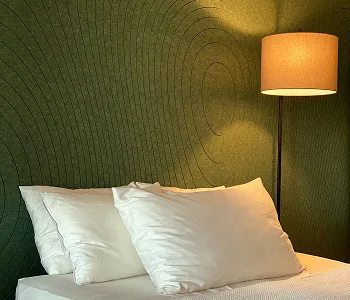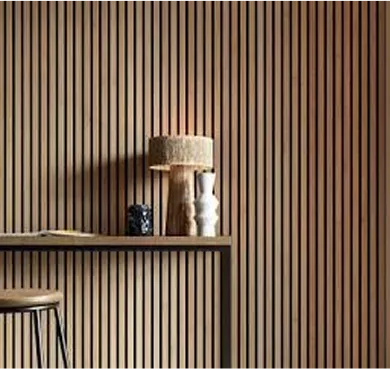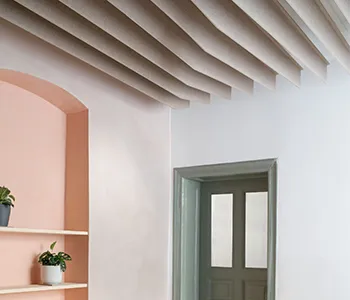Si votre demande n'est pas traitée dans les plus brefs délais, veuillez indiquer votre adresse WhatsApp/Skype dans le message, afin que nous puissions vous contacter dès la première fois.
Nous vous répondrons dans les 24 heures. En cas d'urgence, veuillez ajouter WhatsApp/WeChat :
Avertissement: Variable non définie $public dans /www/wwwroot/bnpanel.com/wp-content/themes/hyhadmin/header.php en ligne 243
Avertissement: Essai d'accès au tableau offset sur null dans /www/wwwroot/bnpanel.com/wp-content/themes/hyhadmin/header.php en ligne 243
,. Ou appelez le
Avertissement: Variable non définie $public dans /www/wwwroot/bnpanel.com/wp-content/themes/hyhadmin/header.php en ligne 243
Avertissement: Essai d'accès au tableau offset sur null dans /www/wwwroot/bnpanel.com/wp-content/themes/hyhadmin/header.php en ligne 243
directement.
Struggling with echo, harsh reflections, and muddled speech? That noise steals clarity and comfort. Left alone, it worsens meetings and design outcomes. The fix is simple: use breathable fabric and the right core to absorb problem sound.
Yes. Polyester fabric is a strong choice for covering an acoustic panel because it is porous, durable, and consistent. It lets sound waves pass through to the core material, supports good sound absorption, resists fraying, and offers stable color. Fire-rated polyester acoustic panels and purpose-made acoustic fabric make selection easy for most projects.
When it comes to acoustic performance, a fabric covering should be porous and “breathable.” Polyester fabric is a fabric known for stable weave openness and toughness. That structure allows sound waves to pass through the fabric and into the material behind it, where energy is dissipated. In practice, if you want the sound to pass into the panel rather than bounce back, choose fabric that you can breathe through.
We manufacture both PET felt and wood-faced systems, and we test covers with simple checks: blow-through, light-through, and a quick clap test. If the fabric is too tight, you get sound waves reflecting and “sound back” into the room. If it’s open enough, the panel absorbs energy and improves sound quality. That’s why many designers pick polyester panels for everyday interiors.
Explore options: polyester acoustic panels for consistent, breathable finishes that fit modern interiors.

What makes polyester a smart fabric for acoustic panels?
Both solutions can absorb mid–high frequencies, but they behave differently. Polyester PET felt is dense, robust, and easy to fabricate into large, clean shapes that stand up to public spaces. Conventional acoustic foam is light and effective but dents easily and can look less refined in premium interiors.
At a glance
| Property | PET polyester felt panels | Open-cell foam panels |
|---|---|---|
| Surface durability | High | Medium |
| Fire options | B-class options available | Varies |
| Cleaning | Wipeable | Tricky |
| Look | Architecture | Studio-grade |
| Typical use | Offices, schools, hospitality | Studios, booths |
For a commercial lobby or classroom, we often specify PET sound-absorbing products to balance look and performance. See our panneaux absorbant le son made from PET felt to compare finishes and thicknesses: panneaux absorbant le son.
Two different goals often get mixed up:
Fabric choice mainly influences sound absorption, not transmission. Use porous acoustic panel fabric so the core can do its job. If you need sound insulation, add mass layers or build walls; insulation panels alone will not stop bass. With polyester, the sound insulation effect is modest; the win is shorter reverberation and clearer speech.
In short, thin fabric will not massively raise sound insulation capacity, but it will keep the absorber active and prevent sound waves reflecting off shiny surfaces. That is key to improving acoustic quality inside the room.
For wall-mounted solutions that treat reflections and flutter, see panneaux muraux acoustiques.
Modern PET felt is a new type of environmentally friendly material, often with recycled content et recycled material streams. From a durability and maintenance standpoint, polyester could be cleaned more easily than delicate natural weaves.
Regarding fire, many PET systems are bonded by high heat during manufacturing; some panels can reach the b1 rating and reach the b1 level with proper formulations. When tested as a system, the sound absorption index is also competitive; in thicker builds the index is also very high across speech bands.
Put simply: polyester blends performance, longevity, and practical maintenance in real spaces like conference rooms and classrooms, while supporting greener procurement policies when available.
When selecting the right cover, your simple rule is: keep it porous. A transparent fabric in the acoustic sense is one that lets air and sound flow. You want the right fabric that feels sturdy yet allows the panel to work. For most projects, the best fabric for acoustic panels is a mid-weight fabric made of polyester, wool, or blends engineered for breathability.
Checklist to choose the best fabric:
If you’re after a ready-to-install option, browse our PET felt fabric panels and patterns: decorative acoustic panels.
An acoustic panel cover is only half the story. Performance comes from the core material behind it. Common choices include PET felt (polyester panels), mineral fiber like rock wool, or wood + felt hybrids. As manufacturers, we tune high density and thickness to balance NRC and finish. PET panels are made as non-woven mats bonded by high heat for stability.
Remember, a cover that is too tight turns the face into a reflector. A porous cover plus the right core material will absorb sound waves efficiently. That is why many specifiers say polyester good for typical public interiors: reliable, consistent, and neat.
Considering mixed-finish spaces? See warm, wood-rich alternatives that still absorb: panneaux acoustiques en bois.

panneaux acoustiques en bois
Field results vary with thickness and mounting, but here is a simplified view we share with clients. All tests depend on method and room, but the trend is steady across projects.
Typical absorption performance (mid-band, ballpark)
| Build | Épaisseur | Mount | Expected NRC band | Notes |
|---|---|---|---|---|
| PET polyester felt panel | 9–12 mm | Direct | 0.35–0.50 | Controls flutter, adds comfort |
| PET polyester felt panel | 24 mm | 25 mm air gap | 0.70–0.85 | Stronger mid absorption |
| Mineral fiber with fabric | 25–50 mm | 25–50 mm air gap | 0.80–1.00 | Highest mid–high band |
In thicker builds with air gaps, absorption efficiency rises and the absorption performance in high frequencies improves. For speech rooms, a target NRC around 0.70+ on key surfaces is a safe bet.
Place panels at first-reflection points—beside and behind talkers, opposite glazing, and on hard ceilings. Use impalers, Z-clips, or adhesive suitable for the substrate. Keep fabric breathable to allow sound to pass.
For acoustic paneling overhead, ensure secure fixing and spread weight across anchors. In offices and classrooms, a grid of PET felt squares can calm chatter without heavy construction. When routing services, leave a neat perimeter so the panels allow sound to pass into the absorber, not into gaps.
Need ready-to-hang sets? See our office-friendly patterns: acoustic panels for office.

How to mount acoustic wall panels on ceilings
Great rooms look good and sound calm. With PET felt, you can cut slats, diamonds, or arcs and still keep the panel working acoustically. That opens decorative acoustic possibilities without compromising performance.
We guide clients to mix solids and reveals for rhythm, and to distribute absorbers where talk happens. Pair a few diffusing wood elements with PET felt to keep life in the room, then tune area coverage to hit target reverberation. In short, design the look first, then fine-tune the acoustic design so the room serves people.
Speech rooms demand sound control more than brute sound insulation. PET felt on side walls and rear walls can lift sound quality for video calls and in-person talks. In conference rooms, we often treat 20–35 percent of hard surface area. That trims decay and supports microphones.
Mini-case: A 28-seat meeting room with glazing on two sides installed 24 mm PET arrays plus a soft ceiling island. Reverberation dropped from 1.1 s to 0.55 s mid-band, and call clarity improved markedly.
For meeting spaces and training rooms, browse preset kits: acoustic panels for conference room.
In custom builds, we often combine polyester and polypropylene components. PET felt does the absorbing sound work; PP helps as trims, clips, or backers where rigidity is needed. As panel manufacturers, we match weave openness, panel density, and mounting to your space type.
If you need brand-specific textures or colors, our OEM/ODM team can align with brand books, provide swatches, and ship globally. For hybrid finishes that add warmth, we pair PET cores with real-wood faces and routed patterns to become the first choice in client-facing areas.
When selecting the right cover, pick one that lets sound to pass into the absorber. With PET, the structure allows sound waves in; tighter weaves send sound back. This is why acoustical panels with breathable coverings offer superior sound absorption without harsh glare. In many commercial interiors, polyester fiber acoustic panel solutions are the best fabric for acoustic needs due to stable look and maintenance. As a fabric known for durability, polyester fabric helps block sound reflections at the face while still letting energy through to the core material—a nuanced balance in real acoustic solutions.
Is polyester the best fabric for acoustic panels?
For most interiors, yes. It is breathable, consistent, and tough. That balance keeps panels working while looking neat. Other textiles can work too, but polyester is widely available and dependable.
Do thicker fabrics always perform better?
No. If the weave is too tight, it can reflect instead of absorb. Aim for breathable covers that let sound waves enter the absorber.
Can fabric alone stop noise between rooms?
Fabric helps absorption inside a room but does not block sound between rooms. For transmission, you need mass, airtight construction, and isolation.
What about fire performance?
Specify tested systems. PET builds bonded by high heat can offer B-class options. Ask for certificates relevant to your region.
Are PET panels washable?
Spot-clean with mild agents. Many PET felts tolerate gentle cleaning and stand up well in public environments.
How do I start a design?
Estimate 20–35 percent coverage in talk zones, then tune placements. Use first-reflection treatments and add ceiling islands if needed.
We are a professional manufacturer in China specializing in high-quality PET and wood acoustic panel systems for B2B projects worldwide. If you are a distributor, designer, contractor, or brand owner looking for OEM/ODM support, we can prototype fast, color-match, and ship globally with reliable lead times.